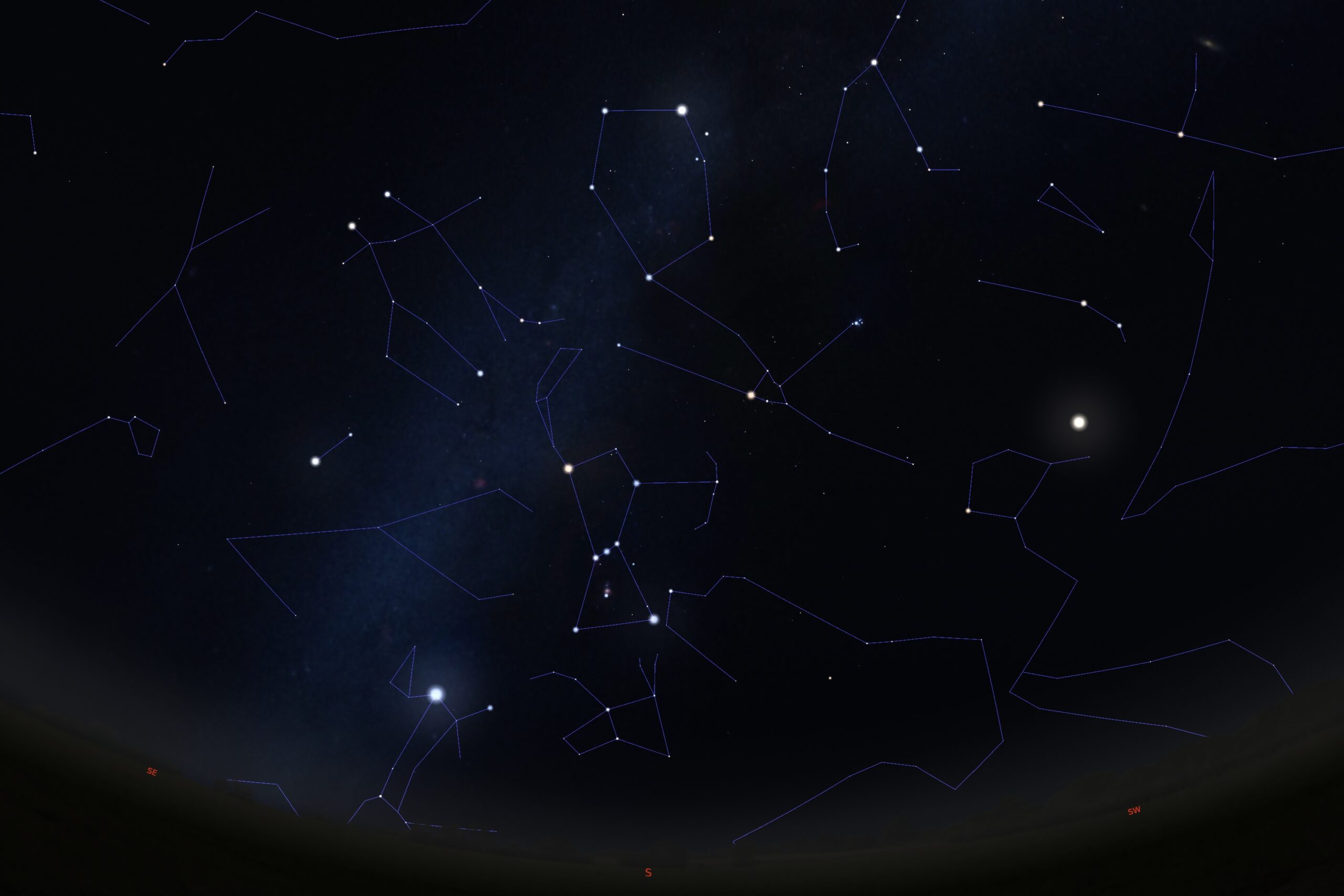With the longer nights drawing in, astronomer Dr Alastair Bruce takes us through Scotland’s marvellous dark skies and shares his top tips for stargazing.
Autumn brings with it longer nights and darker skies in Scotland. Rural inhabitants will be better able to take advantage of these darker skies, enjoying reduced light pollution compared to city-bound observers.
But there is always something to see.
Take note that autumn is an excellent time for seeing the Milky Way, our home galaxy. There are only 6000 stars visible to the naked eye and these twinkly few are relatively nearby.
The bulk of the Milky Way stars are much further away and appear as a beautiful band of starlight. On cool autumn nights, it arcs almost directly overhead.
In winter, the classic hour-glass-shaped Orion (the Hunter) dominates the southern sky.
The three handy ‘belt’ stars of the Hunter point down and left towards the bright star Sirius and up and right towards the V-shaped constellation Taurus and then onwards to the beautiful Pleiades or ‘Seven Sisters’.

Orion just left of centre and Taurus and the Pleaides centre-right.- credit Stellarium open sourec star gazing app
Mighty Jupiter is very well placed to view in September and a steady hand with binoculars can help reveal its four brightest moons. Jupiter climbs to about 45° above the horizon towards the south at earlier and earlier times as the colder months progress.
For early risers and until roughly year-end, look for Venus. It shines brighter than Jupiter in the east before dawn.
Don’t neglect to observe the Moon – it’s an incredible sight in binoculars.
For shooting stars, there are two good opportunities on 17 and 18 November (Leonids) and 13 and 14 December (Geminids).
Aside from these dates, you can still spot the occasional spectacular meteor.
Appearing as slow-moving stars, you can also see many satellites and a highlight is the International Space Station (ISS).
It will make bright evening passes in the southern sky around the end of October, November and January. Be sure to give them a wave.
See heavens-above.com to get exact ISS timings.
AuroraWatch UK is a free website/app that generates alerts for possible aurorae (Northern Lights) caused by our active Sun.
There’s a reasonable chance of observing more naked-eye aurora from Scotland this year.
Faint aurorae can appear white and low towards the north. You may get rewarded with beautiful greens and pink colours too.
My top tips for stargazing
1. Before the clouds clear and you venture outside:
2. Wrap up warm
3. Scout your chosen observing site. If away from home, it’s a good idea to do a daytime recce – look out for possible distracting bright lights and be sure to check access permissions/parking etc. If you don’t feel safe, don’t go.
4.Use a red-light torch. This helps keep your eyes attuned to the dark
5. Bring snacks and company. Check with your local astronomy society for helpful tips/times/locations
6. Get comfortable and enjoy!
Dr Alastair Bruce is an astronomer and planetarium manager at Dynamic Earth in Edinburgh, the UK’s leading earth science engagement charity.
There 6K resolution planetarium hosts presenter-led shows revealing more about some of the stellar wonders that lie far above our heads.
Read more on Scottish Field’s News pages.
Plus, don’t miss the October issue of Scottish Field magazine
TAGS

